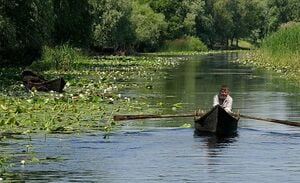
This page is the beginnings of a portal for Europe community action in response to Ecological emergency. See Ecological restoration for topic overview.
Community action projects[edit | edit source]
Ecosystem restoration[edit | edit source]
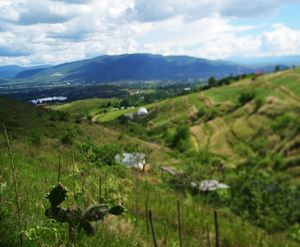
 How China’s most ‘futuristic’ city restored its mangroves, dialogue.earth (Jul 11, 2024)
How China’s most ‘futuristic’ city restored its mangroves, dialogue.earth (Jul 11, 2024)  Community-led approach to mangrove restoration in southern Thailand based on beekeeping, news.mongabay.com (Jun 18, 2024)
Community-led approach to mangrove restoration in southern Thailand based on beekeeping, news.mongabay.com (Jun 18, 2024)  EU passes law to restore 20% of bloc’s land and sea by end of decade, theguardian.com (Jun 17, 2024)
EU passes law to restore 20% of bloc’s land and sea by end of decade, theguardian.com (Jun 17, 2024)
Ecosystem restoration is the process of halting and overturning degradation, resulting in cleaner air and water, extreme weather mitigation, better human health, and recovered biodiversity, including improved pollination of plants. Restoration encompasses a wide continuum of practices, from reforestation to re-wetting peatlands and coral rehabilitation.[1]
Citizen Science[edit | edit source]
Citizen Science refers to the involvement, participation and engagement of citizens in local or online (global) scientific work relevant to the citizens' interests, usually as a hobby, often as a passion.
European Green Belt[edit | edit source]
The European Green Belt initiative is a grassroots movement for nature conservation and sustainable development along the corridor of the former Iron Curtain. The term refers to an environmental initiative as well as the area it concerns. The initiative is carried out under the patronage of the International Union for Conservation of Nature and formerly Mikhail Gorbachev. It is the aim of the initiative to create the backbone of an ecological network that runs from the Barents to the Black and Adriatic Seas.
The European Green Belt as an area follows the route of the former Iron Curtain and connects national parks, nature parks, biosphere reserves and transboundary protected areas as well as non-protected valuable habitats along or across the (former) borders.
Biodiversity[edit | edit source]
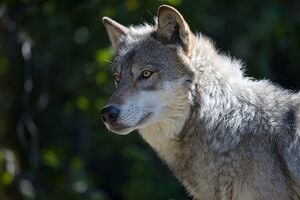
- GoGreenRoutes, an @EU_H2020 project sowing the seeds for increased nature-connectedness across Europe, Latin America and China. Explore our Cultivating Cities, our 360-Health approach to #NBS and more. added 12:22, 24 February 2021 (UTC)
- EuroNatur, Nature conservation in Europe
- European Wildlife, Pan-European non-profit organization dedicated to nature preservation and environmental protection
Rewilding[edit | edit source]
Rewilding Europe is a non-profit organization based in Nijmegen, the Netherlands, dedicated to creating rewilded landscapes throughout Europe. The group's efforts have contributed to increasing the stock of previously endangered species such as the European bison and the Iberian lynx.
Environment quality[edit | edit source]
Trees, woodland and forest[edit | edit source]
- #Together4Forests, added 16:54, 3 November 2020 (UTC)
- SaveParadiseForests
News and comment[edit | edit source]
2021
How to live with large predators – lessons from Spanish wolf country, Nov 15[2]
Back from the brink: Bison return to Romania after 200-year absence, Dec 1[3]
Natural Forests First, Nov 2[4]
'Amazon of Europe' is first UNESCO biosphere to cover five nations, Sep 16[5]
Urban and rural connections[edit | edit source]
section needed
Ecological emergency[edit | edit source]
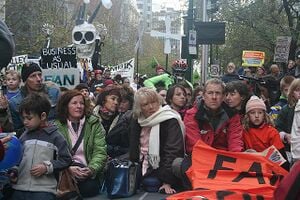
There is consensus in the scientific community that the current environmental degradation and destruction of many of Earth's biota are taking place on a "catastrophically short timescale". Scientists estimate that the current species extinction rate, or the rate of the Holocene extinction, is 1,000 to 10,000 times higher than the normal, background rate. Habitat loss is the leading cause of both species extinctions and ecosystem service decline. Two methods have been identified to slow the rate of species extinction and ecosystem service decline, they are the conservation of currently viable habitat and the restoration of degraded habitat. The commercial applications of ecological restoration have increased exponentially in recent years. In 2019, the United Nations General Assembly declared 2021–2030 the UN Decade on Ecosystem Restoration. W
UN Decade on Ecosystem Restoration[edit | edit source]
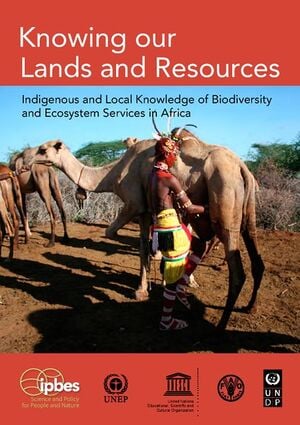
 Green Deal: pioneering proposals to restore Europe's nature by 2050 and halve pesticide use by 2030, ec.europa.eu (Jun 22, 2022)
Green Deal: pioneering proposals to restore Europe's nature by 2050 and halve pesticide use by 2030, ec.europa.eu (Jun 22, 2022)  The farmers restoring Hawaii’s ancient food forests that once fed an island, theguardian.com (Jun 17, 2022)
The farmers restoring Hawaii’s ancient food forests that once fed an island, theguardian.com (Jun 17, 2022)
The UN Decade on Ecosystem Restoration 2021-2030 is a rallying call for the protection and revival of ecosystems all around the world, for the benefit of people and nature. It aims to halt the degradation of ecosystems and restore them to achieve global goals. The United Nations General Assembly has proclaimed the UN Decade and it is led by the United Nations Environment Programme and the Food and Agriculture Organization of the United Nations. The UN Decade is building a strong, broad-based global movement to ramp up restoration and put the world on track for a sustainable future. That will include building political momentum for restoration as well as thousands of initiatives on the ground.[6]
The decade was conceived as a means of highlighting the need for greatly increased global cooperation to restore degraded and destroyed ecosystems, contributing to efforts to combat climate change and safeguard biodiversity, food security, and water supply. W
See also[edit | edit source]
References[edit | edit source]
- ↑ Press release, unep.org
- ↑ theconversation.com
- ↑ euronews.com
- ↑ rewildingeurope.com
- ↑ euronews.com
- ↑ Press release, unep.org



